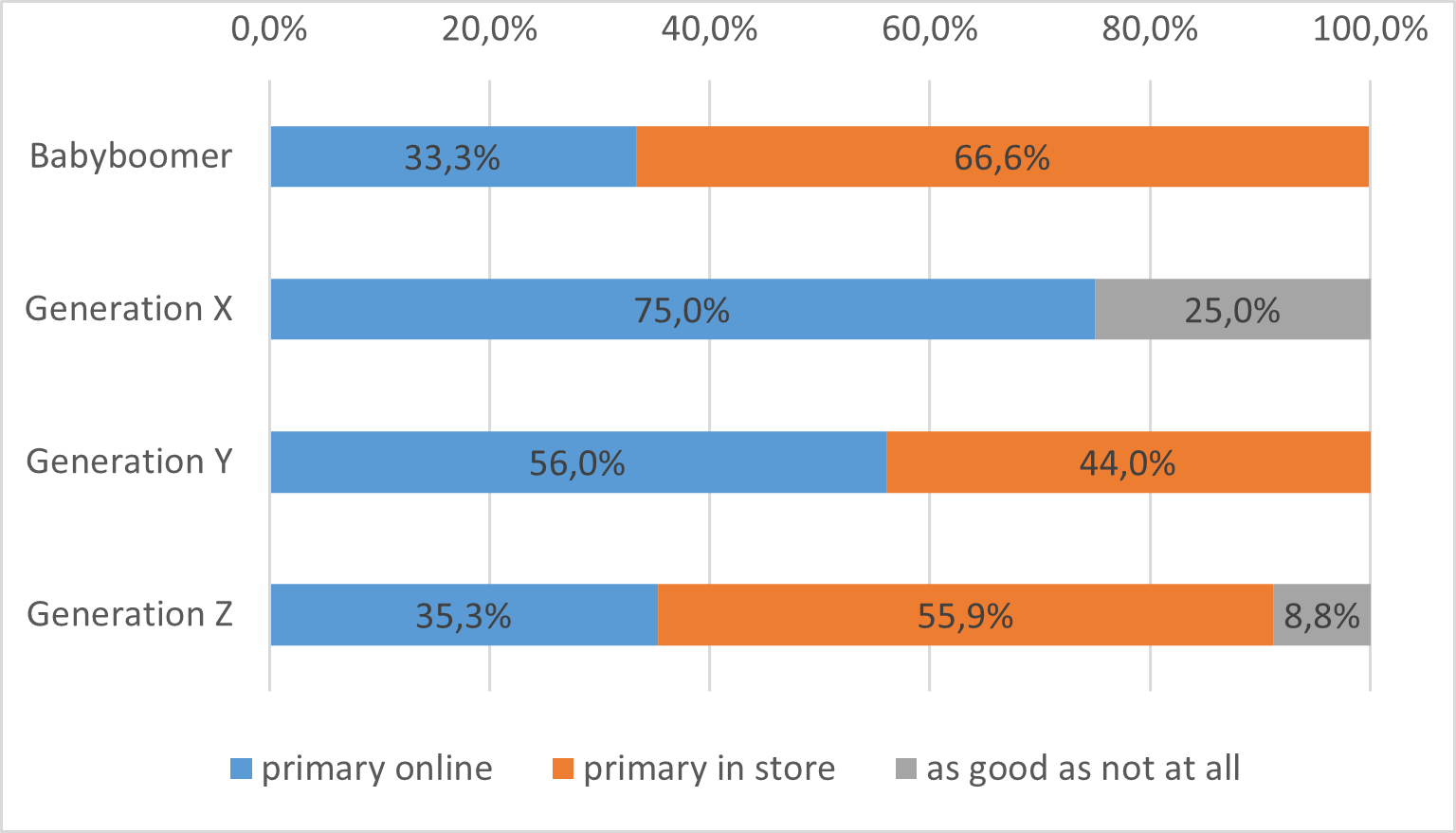Possibilities and limits of virtual and augmented reality in the purchase decision process for clothing
DOI:
https://doi.org/10.25367/cdatp.2022.3.p42-50Keywords:
Clothing, Augmented Reality, Virtual RealityAbstract
This paper examines the influence of virtual and augmented reality on the purchasing decision-making process for clothing. The aim of the study is to gain well-founded insights into the possibilities and limitations of using virtual and augmented reality (VR and AR) techniques in that process. It can be shown that VR and AR applications as interactive systems can offer valuable support in the purchasing decision-making process. New chances and possibilities arise for future shopping in virtual or augmented realities, in which customers are supported in their decision-making. So far, the simulation of visual properties, the limited range of offered pieces, the lack of customer acceptance as well as high barriers to entry and expensive hardware solutions have weakened the full exploitation of potential.
References
Socha, M. Dior Is Inviting People Try on Sneakers Via Augmented Reality, 2020. https://wwd.com/fashion-news/fashion-scoops/dior-is-inviting-people-try-on-sneakers-via-augmented-reality-1234649051/ (retrieved November 18, 2021).
Shearsmith, T. Burberry launches new Augmented Reality shopping tool, 2020. https://www.theindustry.fashion/burberry-launches-new-augmented-reality-shopping-tool/ (retrieved November 18, 2021).
Baren, K. Carlings Physical T-Shirt Gives Virtual Fashion the Accessible Vibe Brand Land’s Been Waiting for, 2019. https://www.forbes.com/sites/katiebaron/2019/12/09/carlings-phygital-t-shirt-gives-virtual-fashion-the-accessible-vibe-brand-lands-been-waiting-for/?sh=196431c813a8 (retrieved November 18, 2021).
Javornik, A. Augmented reality: Research agenda for studying the impact of its media characteristics on consumer behaviour. Journal of Retailing and Consumer Services 2016, 30, 252-261.
Katzengruber, W. and Pförtner, A. Sales 4.0: Strategien und Konzepte für die Zukunft im Vertrieb; Wiley-VCH, Weinheim, 2017.
Palomo-Lovinski, N. Extensible Dress: The Future of Digital Clothing. Clothing and Textiles Research Journal 2008, 26(2), 119-130.
Spanke, M. Retail Isn’t Dead: Innovative Strategies for Brick and Mortar Retail Success; Cham: Springer International Publishing, 2020.
Tagiev, R. Smart Fitting Rooms: How they work and why stores need them, 2017. https://www.facelet.com/en-us/blog/smart-fitting-rooms-how-they-work-and-why-stores-need-them/ (retrieved November 18, 2021).
Swoboda, B.; Foscht, T.; Schramm-Klein, H. Käuferverhalten: Grundlagen – Perspektiven – Anwendungen. Springer Fachmedien, Wiesbaden, 2017, p. 28 f., p. 85, p. 89.
Gröppel-Klein, A.; Kroeber-Riel, W. Konsumentenverhalten, Vahlen, 2019, p. 15, p. 19, p. 258.
Trommsdorff, V. Konsumentenverhalten, Kohlhammer, 2008, p. 49.
Homburg, C. Marketingmanagement: Strategie – Instrumente – Umsetzung – Unternehmensführung. Springer Fachmedien Wiesbaden, 2020, p. 39f., p. 58, p. 82, p. 86.
Backhaus, K. and Paulsen, T. Vom Homo Oeconomicus zum Homo Digitalis, in: Marketing Weiterdenken: Zukunftspfade für eine marktorientierte Unternehmensführung. Springer Fachmedien, Wiesbaden, 2020. pp. 323-339.
Park, J.; Stoel, L.; Lennon, S. J. Cognitive, affective and conative responses to visual simulation: The effects of rotation in online product presentation. Journal of Consumer Behaviour 2008, 7(1), 72–87.
Richter, S., et al. Virtual und Augmented Reality: Status Quo, Herausforderungen und zukünftige Entwicklungen: TA-Vorstudie. Büro für Technikfolgen-Abschätzung beim Deutschen Bundestag, 2019, p. 9
Dörner, R., et al. Einführung in Virtual und Augmented Reality, in: Virtual und Augmented Reality (VR/AR): Grundlagen und Methoden der Virtuellen und Augmentierten Realität, Springer Berlin Heidelberg, 2019, p. 1-42.
Witmer, B. and Singer, M. Measuring Presence in Virtual Environments: A Presence Questionnaire. In: Presence: Teleoperators and Virtual Environments 1998, 7(3). 225-240.
Swahn, C. and Eriksson, N. Does the devil wear Prada? A content analysis of costume design in video games as a tool for conveying narrative and functionality: A study concerning costume design and its current use in games, Dissertation thesis, Södertörns Hägskola, Stockholm, Sweden 2020.
Gaffary, Y., et al. AR Feels “Softer” than VR: Haptic Perception of Stiffness in Augmented versus Virtual Reality. IEEE Transactions on Visualization and Computer Graphics 2017, 23, 2372-2377.

Downloads
Published
How to Cite
Issue
Section
License
Copyright (c) 2022 Bastian Quattelbaum, Christof Breckenfelder, Jens Voigt, Leonie Maas

This work is licensed under a Creative Commons Attribution-NonCommercial-NoDerivatives 4.0 International License.





